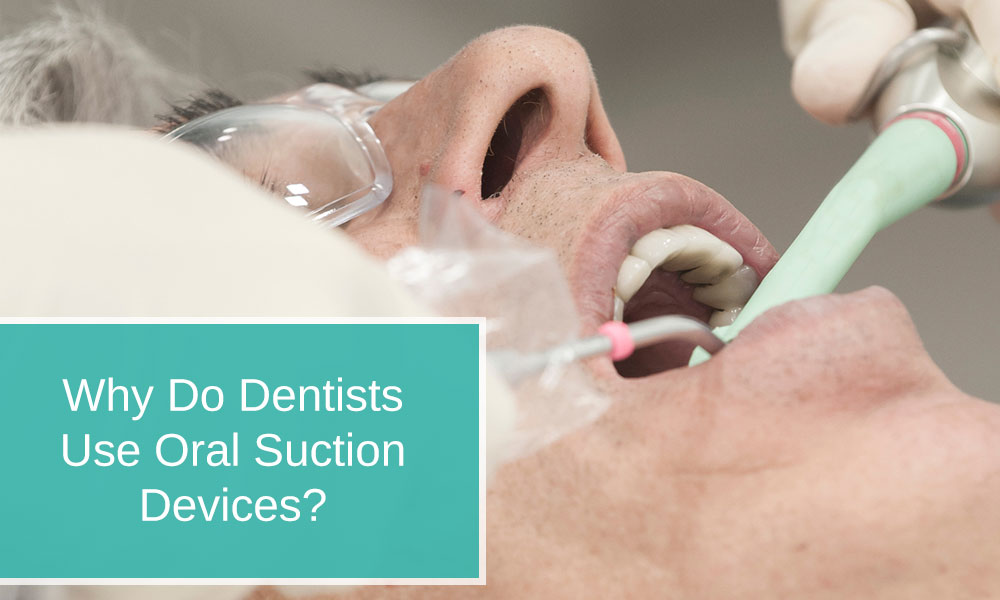
Why Do Dentists Use Oral Suction Devices?
In the realm of dentistry, precision and patient comfort go hand in hand. Among the unsung heroes contributing to this synergy are oral suction devices. It is important to demystify the significance of these devices, exploring their functions, types, benefits, and addressing common concerns associated with their use.
Understanding Oral Suction Devices
What are Oral Suction Devices?
Oral suction devices are indispensable tools in dental practices designed to maintain a clear and dry oral environment during various procedures. These devices efficiently remove saliva, blood, water, and other fluids, ensuring optimal visibility for dentists.
How Do Oral Suction Devices Work?
The working principle of oral suction devices revolves around creating a vacuum to suction fluids from the oral cavity. Typically positioned near the patient’s mouth, these devices employ a combination of suction power and strategically designed nozzles to effectively remove fluids and prevent their accumulation.
Importance in Dental Procedures
Removing Saliva and Excess Fluids
One of the primary roles of oral suction devices is the removal of saliva and excess fluids during dental procedures. Saliva, while essential for oral health, can hinder the precision of dental work. Suction devices swiftly eliminate these impediments, allowing dentists to work in a dry and controlled environment.
Enhancing Visibility
Enhancing visibility is paramount in dentistry, especially during intricate procedures. Oral suction devices play a key role in maintaining a clear field of vision by swiftly evacuating fluids. This ensures that dentists can visualize the treatment area with precision, leading to improved accuracy in diagnosis and procedures.
Preventing Aerosol Spread
In the context of infectious diseases, particularly in the wake of global health concerns, oral suction devices contribute to preventing aerosol spread. Dental procedures often generate aerosols, which can carry bacteria and viruses. Effective suction minimizes the dissemination of these particles, promoting a safer environment for both dental practitioners and patients.
Types of Oral Suction Devices
High-Volume Evacuators (HVE)
High-Volume Evacuators (HVE) are powerful suction devices designed for efficient removal of large volumes of fluids. These devices typically feature a wide-bore tip, allowing for swift evacuation. HVEs are essential for heavy-duty suction requirements during various dental procedures, providing optimal efficiency in fluid removal.
Saliva Ejectors
Saliva ejectors are smaller, more discreet suction devices commonly used for continuous, low-volume suction. They are often positioned near the treatment area to eliminate saliva and maintain a dry environment. Saliva ejectors are gentler and well-suited for procedures where heavy suction may be unnecessary.
Benefits and Advantages
Patient Comfort
The use of oral suction devices significantly contributes to patient comfort during dental treatments. By swiftly removing saliva and fluids, these devices minimize the potential for discomfort associated with excessive pooling of fluids in the oral cavity. Patients experience a drier and more pleasant dental visit.
Infection Control
In the age of stringent infection control measures, oral suction devices play an important role in infection control within dental practices. By reducing the spread of aerosols and maintaining a hygienic treatment environment, these devices contribute to preventing cross-contamination and ensuring the safety of both patients and dental staff.
Efficiency in Dental Procedures
The efficiency in dental procedures is a noteworthy advantage of incorporating oral suction devices. By providing a clear visual field and minimizing interruptions for fluid evacuation, these devices enhance the efficiency and accuracy of various dental treatments, ultimately benefiting both the practitioner and the patient.
Common Concerns and Misconceptions
Potential Discomfort for Patients
A common concern associated with oral suction devices is the potential for discomfort for patients. However, modern designs prioritize patient comfort, and dentists can adjust suction levels to ensure an optimal balance between effective fluid removal and patient ease. Open communication between the dentist and patient can address and alleviate any concerns. It is also important to know that dentists will use tools such as mirrors to help identify the cause of the discomfort.
Effectiveness in Aerosol Reduction
Another misconception relates to the effectiveness in aerosol reduction. While oral suction devices significantly minimize aerosol spread, they may not eliminate it entirely. Combining suction devices with additional measures such as air filtration systems enhances overall aerosol control, fostering a safer treatment environment.
Maintenance and Cleaning
Regular Inspections
Regular inspections are paramount for the optimal performance of oral suction devices. Dental practitioners should conduct routine checks to ensure that hoses, tips, and filters are in good condition. Any signs of wear, tear, or blockages should be promptly addressed to prevent disruptions during dental procedures.
Cleaning Protocols
Cleaning protocols play a key role in maintaining the hygiene of oral suction devices. After each use, the devices should be thoroughly cleaned and disinfected following recommended guidelines. This includes the proper disposal or sterilization of disposable components and the meticulous cleaning of reusable parts. Adhering to stringent cleaning protocols is essential for infection control and the longevity of the equipment.
Selection and Considerations
Choosing the Right Oral Suction Device
When choosing the right oral suction device, factors such as the type of dental procedures performed, the volume of fluid removal required, and patient comfort considerations should be taken into account. High-Volume Evacuators are suitable for heavy-duty suction, while saliva ejectors offer gentler, continuous suction.
Integration with Dental Equipment
Integration with dental equipment is a critical consideration. The chosen oral suction device should seamlessly integrate with other dental tools and technologies, enhancing the overall efficiency of the dental practice. Compatibility with dental chairs, units, and sterilization processes ensures a cohesive workflow.
Future Trends and Innovations
The landscape of dentistry is continually evolving, and oral suction devices are no exception. Future trends and innovations may include advancements in suction technology, integration with digital systems, and enhanced ergonomics for both practitioners and patients. Keeping an eye on these developments ensures that dental practices stay at the forefront of patient care.
Key Takeaways
In the symphony of dental care, oral suction devices emerge as instrumental players, orchestrating a harmonious blend of fluid control, patient comfort, and infection prevention. Ranging from the subtle efficiency of saliva ejectors to the robust power of High-Volume Evacuators, these devices are the unsung heroes shaping the landscape of modern dentistry. Their pivotal role in maintaining visibility, curbing aerosol spread, and fostering a hygienic environment cannot be overstated. By dispelling common concerns and misconceptions, practitioners can embrace these devices with confidence, ensuring both clinical efficacy and patient well-being. The meticulous adherence to maintenance protocols ensures sustained functionality, while the evolving trends and innovations promise a future where oral suction devices continue to redefine the standards of care, ushering in an era marked by efficiency, safety, and excellence in dental practice. This guide stands as a testament to their indispensable role, providing dental professionals with a navigational compass toward enhanced patient care and continued clinical advancement.



